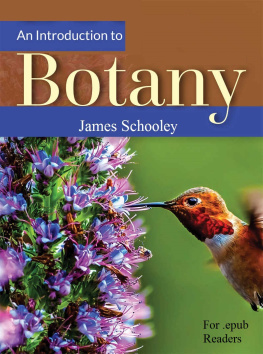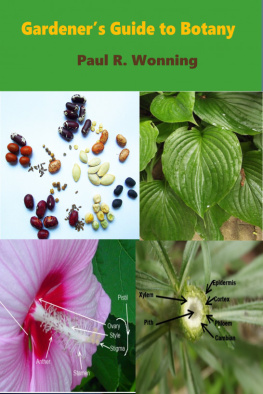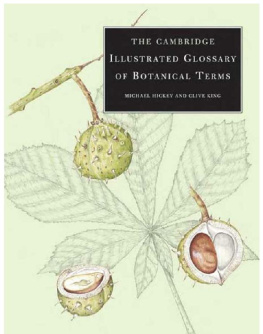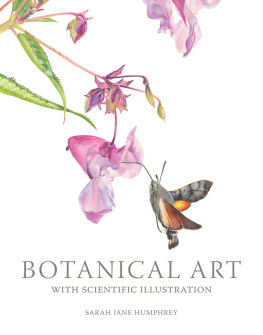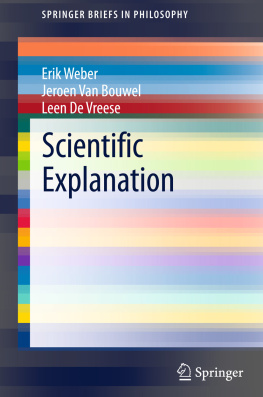
Introduction to Botany
James Schooley
Delmar Publishers
an International Thomson Publishing company
Albany Bonn Boston Cincinnati Detroit London Madrid Melbourne Mexico City New York Pacific Grove Paris San Francisco Singapore Tokyo Toronto Washington
NOTICE TO THE READER
Publisher does not warrant or guarantee any of the products described herein or perform any independent analysis in connection with any of the product information contained herein. Publisher does not assume, and expressly disclaims, any obligation to obtain and include information other than that provided to it by the manufacturer.
The reader is expressly warned to consider and adopt all safety precautions that might be indicated by the activities herein and to avoid all potential hazards. By following the instructions contained herein, the reader willingly assumes all risks in connection with such instructions.
The publisher makes no representation or warranties of any kind including but not limited to the warranties of fitness for particular purpose or merchantability, nor are any such representations implied with respect to the material set forth herein, and the publisher takes no responsibility with respect to such material. The publisher shall not be liable for any special, consequential, or exemplary damages resulting, in whole or part, from the readers' use of, or reliance upon, this material.
Cover illustration by Laurette Richin
Delmar Staff
Publisher: Tim O'Leary
Acquisitions Editor: Cathy L, Esperti
Senior Project Editor: Andrea Edwards Myers
COPYRIGHT 1997 By Delmar Publishers
a division of International Thomson Publishing Inc. The ITP logo is a trademark under license.
Printed in the United States of America For more information, contact:
Delmar Publishers 3 Columbia Circle, Box 15015 Albany, New York 12212-5015
International Thomson Publishing Europe
Berkshire House 168-173
High Holborn
London, WC1V7AA
England
Thomas Nelson Australia 102 Dodds Street South Melbourne, 3205 Victoria, Australia
Nelson Canada 1120 Birchmount Road Scarborough, Ontario Canada M1K 5G4
Production Manager: Wendy A. Troeger Production Editor: Carolyn Miller Marketing Manager: Maura Theriault
International Thomson Editores Campos Eliseos 385, Piso 7 Col Polanco
11560 Mexico D F Mexico
International Thomson Publishing GmbH Konigswinterer Strasse 418 53227 Bonn Germany
International Thomson Publishing Asia 221 Henderson Road #05-10 Henderson Building Singapore 0315
International Thomson Publishing Japan
Hirakawacho Kyowa Building, 3F
2-2-1 Hirakawacho
Chiyoda-ku, Tokyo 102 Japan
All rights reserved. No part of this work covered by the copyright hereon may be reproduced or used in any form or by any meansgraphic, electronic, or mechanical, including photocopying, recording, taping, or information storage and retrieval systemswithout the written permission of the publisher.
3 4 5 6 7 8 9 10 XXX 03 02 01 00
Library of Congress Cataloging-in-Publication Data
Schooley, James.
Introduction to botany / James Schooley. p. cm.
Includes bibliographic references (p. ) and index.
ISBN 0-8273-7378-3
1. Botany. 2. Horticulture. I. Title.
QK47.S37 1996
581dc20 96-4945
CIP
Introduction
The study of biology historically has been divided into two realms: botany, for plants, and zoology, for animals. This suggests that all living organisms are either plants or animals, a theory that presented little problem when applied to giraffes and elm trees. But when bacteria were discovered, there resulted some puzzlement regarding to which realm these organisms should be relegated. Further research and discoveries only increased the uncertainty until, in 1959, Professor R.H. Whittaker proposed a five-kingdom system as follows: Monera, Protista, Fungi, Plants, and Animals. Members of the Monera kingdom are prokaryotic (having no definite nuclei) cells such as bacteria and blue-green algae. Members of the Protista kingdom are eukaryotic (having true nuclei) cells. Members of the Fungi kingdom are plantlike but lack chlorophyll. Such organisms, therefore, do not manufacture carbohydrate as do green plants, and must therefore live as either parasites or saprophytes (organisms that live on dead matter). Because people are so accustomed to classifying organisms as either plant or animal, this system has been slow to take hold. And while this five-kingdom system does not solve all problems relating to classification, it does constitute a step forward. It is thus the system of classification employed in this text.
Acknowledgments
The author wishes to thank Dr. Knut Norstog, formerly editor of the American Journal of Botany, first, for his friendship, and second, for helping to put in clear language some comments regarding the origin of seed plants. The author also wishes to express appreciation to the following, all at Delmar Publishers: Cathy Esperti, acquisitions editor, for fine-tuning the manuscript; Wendy Troeger, who worked on art and book manufacturing; and Maura Theriault and Suzanne Fronk, for their work in marketing. Appreciation is also expressed to those other professionals at Delmar Publishers who aided this work without even making themselves known, and to Thomas J. Gagliano, Gagliano Graphics, Albuquerque, New Mexico for the illustrations. Finally, the author wishes to thank the following reviewers, who provided constructive comments and input:
Cheryl Carney
Iowa Lakes Community College
Alan Smith
University of Minnesota
Connie Fox
Tarleton State University
Dedication
This book is dedicated to the memory of Barbara McClintock (1902-1992). In 1983 she was awarded the Nobel Prize in Genetics for the discovery of jumping genes (genes that regularly change their positions on chromosomes). In 1944 she served as President of the Genetics Society of America, and in 1945 was President of the National Academy of Sciences. She once confided to me that one reason for her devotion to the study of corn was to combat loneliness.
1 The Origin of Life
The study of botany very properly begins with a few comments about the origin of life. How did life come about? We know there was a time when the planet had no life. Life may have begun nearly four billion years ago.
As we look around today, we are led to the conclusion that all life comes from previously existing life. Further, knowing that organisms are composed of cells, we concur with what Rudolf Virchow (1821-1902) said in 1858: that all cells come from previously existing cells. Our common sense tells us so.
The Theory of Spontaneous Generation
Yet, this is modern-day common sense. Common sense in other times told people quite a different thing. They saw earthworms arising from the mud, especially after a rain. They saw maggots coming out of the garbage. They saw evidence all around them of life arising from nonliving precursorsof the spontaneous generation of life. In fact, Jan van Helmont (1577-1644) passed on a recipe for making mice: put some old rags in a dark corner, sprinkle some grains of wheat on the rags, and in twenty-one days you have mice. The mice presumably generated spontaneously.
Francesco Redi (1626-1697) was the first to investigate the theory of spontaneous generation of life. He took two dishes of meat, covered one with gauze, left the other dish uncovered, and let both dishes stand for a time. While the meat in both dishes decayed, only the uncovered dish developed maggots. Redis experiment did not disprove the spontaneous generation of life, however; it disproved only the spontaneous generation of maggots.
Next page
